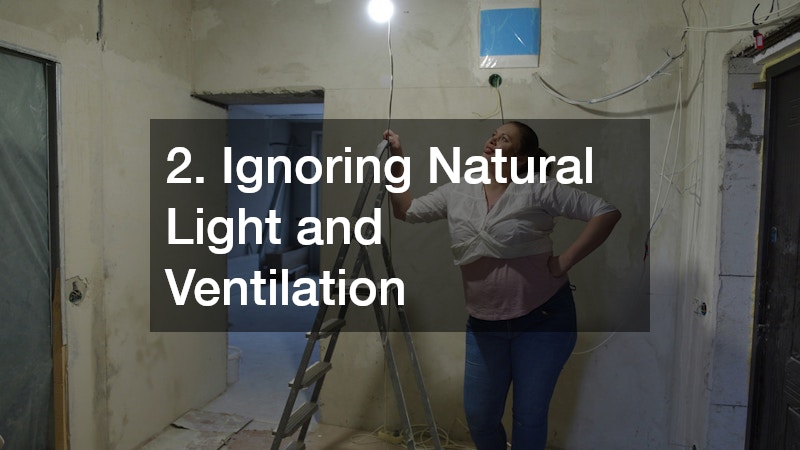
Renovating a small home can be an exciting yet challenging task. With limited space and a tight budget, homeowners must be strategic about every decision they make. Whether you’re upgrading for comfort, functionality, or resale value, knowing what not to do is just as important as having a solid plan.
In this article, we’ll explore the top 10 small house renovation mistakes to avoid and how to ensure your project stays efficient, beautiful, and stress-free. These insights are perfect for homeowners looking to avoid common pitfalls and discover practical small home renovation ideas that work.
1. Not Planning for Storage: Where Will Everything Go?
One of the biggest mistakes in small house renovations is underestimating the need for proper storage. Without careful planning, clutter quickly overwhelms small spaces.
What to do instead:
- Use multi-functional furniture like ottomans with hidden compartments.
- Install wall-mounted cabinets or open shelving in underused areas.
- Make use of vertical space, especially in closets and kitchens.
Smart storage is essential to maintaining a clean and organized home.
2. Ignoring Natural Light and Ventilation
Light makes a space feel larger. Homeowners often forget that blocking windows or painting with dark colors can shrink a room visually and emotionally.
Avoid this by:
- Choosing light-reflecting paint colors such as whites, creams, or soft grays.
- Keeping window treatments light or sheer.
- Adding mirrors to reflect light and create a sense of space.
Also, proper ventilation helps with air quality and prevents mold, so don’t skip on that exhaust fan in the bathroom!
3. Overloading with Too Many Design Elements
In a small home, going overboard with patterns, textures, and decorations can make the space feel chaotic and cramped.
Try this instead:
- Stick to a cohesive color palette.
- Choose minimalistic décor and clean lines.
- Let one feature (like a statement wall or artwork) be the focal point.
Less really is more when it comes to design in a small space.
4. Choosing Bulky or Oversized Furniture
Large sofas and dining tables might look good in a showroom, but they can overwhelm a small house.
Better choices include:
- Scaled-down, space-saving furniture.
- Expandable or foldable tables.
- Wall-mounted desks or floating shelves.
Measure twice and visualize the layout before buying any major furniture pieces.
5. Failing to Maximize Vertical Space
When floor space is limited, vertical space becomes prime real estate.
How to use it wisely:
- Add tall shelving units in living rooms, bathrooms, or pantries.
- Install upper kitchen cabinets that reach the ceiling.
- Hang items on the wall using hooks, pegboards, or racks.
Vertical storage keeps your floors clear and your home more functional.
6. Underestimating Budget and Timeline
Many homeowners get surprised when renovation costs pile up or projects take longer than expected.
To avoid this mistake:
- Set a realistic budget with a 10–20% buffer for unexpected expenses.
- Plan the renovation timeline carefully, especially if you’re living in the home during the remodel.
- Prioritize your renovation goals to stay focused.
Planning ahead helps prevent mid-project panic.
7. Poor Lighting Choices
A single ceiling light isn’t enough to illuminate most rooms effectively, especially in a small home where every corner counts.
Use layered lighting:
- Ambient lighting (ceiling fixtures)
- Task lighting (under-cabinet lights, desk lamps)
- Accent lighting (wall sconces, LED strips)
Proper lighting enhances functionality and mood, making your small home feel more open.
8. Skipping Professional Help When It’s Needed
It’s tempting to go the DIY route to save money, but some jobs are better left to the pros.
Don’t DIY:
- Electrical rewiring
- Major plumbing work
- Structural changes
Hiring certified professionals ensures safety, quality, and compliance with building codes.
9. Not Thinking Long-Term
Design trends come and go. What’s fashionable now might feel outdated in just a few years.
Think ahead by:
- Choosing timeless materials like wood, neutral tiles, or stone.
- Avoiding overly trendy colors or layouts.
- Investing in durable finishes and materials.
This ensures your renovation stays relevant and valuable for years to come.
10. Forgetting Functionality Over Aesthetics
It’s easy to get caught up in aesthetics and forget that your home has to work for your daily life.
Ask yourself:
- Is there enough room to walk around furniture?
- Can the doors open fully?
- Is there a clear traffic flow?
The best small home renovation ideas balance visual appeal with livability. Make choices that make your day-to-day life easier, not just more beautiful.
Final Thoughts: Renovate Smart, Not Just Stylish
Renovating a small home can greatly improve your quality of life—but only if done thoughtfully. By avoiding these ten common mistakes, you can turn your compact space into a comfortable, stylish, and efficient haven. Always plan carefully, think practically, and be realistic about your limitations and needs. Your home may be small, but with the right approach, it can be mighty in both form and function.





